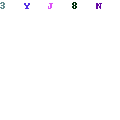Post by account_disabled on Feb 19, 2024 5:10:51 GMT -4
We have translated and delivered Season 2, Episode 4 of a series that debunks SEO urban legends distributed on Google Webmasters' YouTube channel . ( Click here for episode 3 ) This time's theme is URL canonicalization and canonical tags, and our guest is Rachel Costello, a technical SEO consultant from Builtvisible. (At the time this episode was recorded, he wastechnical SEO and content manager) Below, we will introduce the contents of the episode. table of contents URL normalization is not grouping by theme Common misconceptions about normalization Is the Canonical tag an instruction? Is it a signal? Don't use canonical as a replacement for redirects Elements of URL normalization/duplication removal Canonicalization signals from the site and canonical URLs desired by users Unique content within a page canonicalized with Canonical tags Below is a summary of Season 2 Episode 4. Although some parts have been omitted or paraphrased, I have tried to summarize them so that the main meaning is not lost.
Note: In the English video, the expression "Canonical" is used both telephone number list for URL canonicalization and for Canonical tags, so it is at our discretion to distinguish between "URL canonicalization" and "Canonical tags". doing. URL normalization is the process of having search engines recognize and index one of the pages as a canonical URL when duplicate pages with the same or nearly identical content exist in multiple URLs. . Canonical tag is one of the measures and normalization signals that can be used on the site side to normalize URLs. Search Console Help: Merge URL normalization is not grouping by theme Mr. Costello: Many people seem to mistakenly think of URL canonicalization as grouping URLs with similar themes. Only URLs with the same or nearly identical page content will be normalized. Mr. Splitt: That's right. URL canonicalization is for duplicate management.

To prevent unnecessary crawling, rendering, and indexing, we remove duplicate URLs to avoid displaying the same page multiple times in search results. If the same page appears multiple times in the search results, it's not a good search result. ② Common misconceptions about normalization Mr. Splitt: What do you think are the most common misconceptions and mistakes with URL canonicalization? Mr. Costello: First of all, I think many people mistakenly think that the Canonical tag is an instruction, and that if you set the Canonical tag, the content will be adopted as is. Another mistake I see is people using canonical tags instead of redirects. For example, when a product is out of stock on an e-commerce site, you can set a canonical tag from that URL to the parent category page. We recognize that one of the prerequisites for the content of the Canonical.
Note: In the English video, the expression "Canonical" is used both telephone number list for URL canonicalization and for Canonical tags, so it is at our discretion to distinguish between "URL canonicalization" and "Canonical tags". doing. URL normalization is the process of having search engines recognize and index one of the pages as a canonical URL when duplicate pages with the same or nearly identical content exist in multiple URLs. . Canonical tag is one of the measures and normalization signals that can be used on the site side to normalize URLs. Search Console Help: Merge URL normalization is not grouping by theme Mr. Costello: Many people seem to mistakenly think of URL canonicalization as grouping URLs with similar themes. Only URLs with the same or nearly identical page content will be normalized. Mr. Splitt: That's right. URL canonicalization is for duplicate management.

To prevent unnecessary crawling, rendering, and indexing, we remove duplicate URLs to avoid displaying the same page multiple times in search results. If the same page appears multiple times in the search results, it's not a good search result. ② Common misconceptions about normalization Mr. Splitt: What do you think are the most common misconceptions and mistakes with URL canonicalization? Mr. Costello: First of all, I think many people mistakenly think that the Canonical tag is an instruction, and that if you set the Canonical tag, the content will be adopted as is. Another mistake I see is people using canonical tags instead of redirects. For example, when a product is out of stock on an e-commerce site, you can set a canonical tag from that URL to the parent category page. We recognize that one of the prerequisites for the content of the Canonical.
